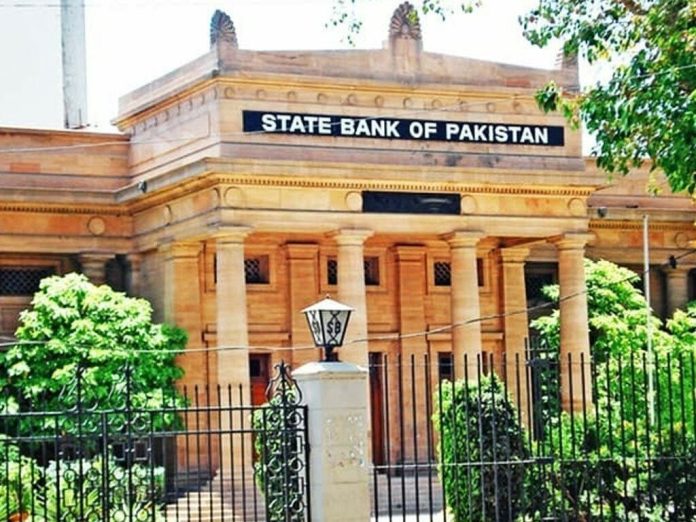ISLAMABAD: The Monetary Policy Committee (MPC) slashed the key policy rate by 200bps to 17.5% from the exist-ing 19.5%, the State Bank of Pakistan (SBP) announced on Thursday, as inflation eased to the first sin-gle-digit figure in nearly three years.
The new policy rate will be effective from September 13, 2024.
As per a statement released by the central bank, both headline and core inflation fell sharply over the past two months.
“The pace of this disinflation has somewhat exceeded the Committee’s earlier expectations, mainly due to the delay in the implementation of planned increases in administered energy prices and fa-vourable movement in global oil and food prices,” it read.
During the meeting, the MPC acknowledged the inherent uncertainty related to these developments, which warranted a cautious monetary policy stance. In this regard, the Committee underscored the importance of the tight monetary policy stance in driving the sustained decline in inflation over the past year.
The Committee noted the following key developments since its last meeting that have implications for the macroeconomic outlook.
Global oil prices have fallen sharply, though they remain volatile.
SBP’s FX reserves are around $9.5 billion as of September 6, despite weak official FX inflows and con-tinued debt repayments.
Secondary market yields of government securities have declined noticeably since the last MPC meet-ing.
Inflation expectations and confidence of businesses have improved in the latest pulse surveys, while those of consumers have worsened slightly.
The Federal Board of Revenue (FBR) tax collection during July-August 2024 was lower than the target.
Taking into account these developments as well as the potential risks to the inflation outlook and to-day’s decision, the MPC assessed the real interest rate to still be adequately positive to bring inflation down to the medium-term target of 5% to 7% and help ensure macroeconomic stability. This would be essential to achieve sustainable economic growth over the medium term.
Real sector
The SBP said that the recent high-frequency sales indicators reflect a moderate pick up in the econom-ic activity. Domestic cement and POL sales (excluding furnace oil) increased by 8.5% and 6.8% in a month-on-month basis in August, respectively.
Latest business sentiment surveys also support this assessment of a moderate pickup, as manufactur-ing firms reported increased capacity utilisation during the past couple of waves.
“At the same time, the MPC noted that the outlook for the agriculture sector has weakened. This is attributed to an expected shortfall in cotton production from the government’s target, given the de-cline in area under cultivation and a substantial drop in cotton arrivals by end-August 2024.”
On the other hand, the Committee observed that the continued ease in inflationary pressures and the unfolding impact of recent policy rate cuts will support the growth prospects in the industry and ser-vices sectors. On balance, therefore, the real Gross Domestic Product (GDP) growth outlook remained in line with the MPC’s earlier assessment of 2.5% – 3.5% for FY25, the central bank stated.
External sector
As per SBP, the elevated workers’ remittance inflows and a substantial improvement in export earn-ings offset an increase in imports and helped contain the current account deficit to $0.2 billion in July 2024.
This robust trend in workers’ remittances continued in August as well.
The global macroeconomic environment also turned favorable as manifested by the substantial sof-tening of crude oil prices and relative easing of global financial conditions.
“Going forward, import volumes are expected to increase, in line with the ongoing domestic economic recovery. However, the improvement in the country’s terms of trade, mainly driven by softening crude oil prices, is expected to contain the overall trade deficit in FY25.”
Moreover, the export earnings are expected to remain stable as the growth in high value added tex-tiles is expected to compensate for the likely reduction in rice exports.
“The MPC observed that these factors, along with robust workers’ remittances, are expected to keep the current account deficit within the projected range of 0% to 1% of GDP in FY25. This contained cur-rent account deficit, along with the realisation of inflows planned under the IMF program, will help fur-ther strengthen SBP’s FX reserves.
Fiscal sector
The SBP stated that during July-August FY25, the FBR tax collection grew by 20.5%. The MPC noted that the pace of tax collection in the remaining months of FY25 needs to be significantly higher than the current rate to meet the revenue target for the fiscal year.
“Meanwhile, the fiscal consolidation achieved in the past couple of years has supported monetary pol-icy in bringing inflation down and restoring overall macroeconomic stability. As a result, the gross public debt to GDP ratio has recorded a significant improvement, declining from 75% at end-June 2023 to 67.2% at end-June 2024,” it said.
Going forward, the MPC expected that the fiscal consolidation would continue through reforms aimed primarily at broadening of tax base and curtailing PSE losses (particularly by addressing energy sector issues), which would create additional space for social and development spending.
Money and credit
“The broad money (M2) growth decelerated to 14.6% as of end-August 2024, from 16.1% at end-June, primarily due to more than seasonal retirements in private sector credit (PSC) and commodity opera-tions financing,” the statement read.
As per the SBP, the growth in reserve money, after remaining subdued during FY24, somewhat re-versed, but is still lower than its historical trend. From the liability side, deposits remained the mainstay of M2 growth.
“The MPC emphasised that the planned official FX inflows will be critical for the government to reduce its reliance on the domestic banking sector, improve the NFA, and create space for lending to the pri-vate sector. The MPC also viewed that the currently subdued growth in PSC may pick up with the ease in financial conditions,” it added.
Inflation outlook
Maintaining its downward trajectory, headline inflation eased to single digit to 9.6% year-on-year in August 2024 from 12.6% in June 2024, for the first time in three years. Meanwhile, the core inflation declined to 11.9% from 14.1%
“The Committee assessed that this decline reflected the impact of contained demand, reinforced by improved supplies of major food items, favourable global commodity prices and delay in upward ad-justments in administered energy prices.”
Moreover, the MPC assessed the near-term inflation outlook to be susceptible to some risks. Core inflation is still high and consumers’ inflation expectations increased further in the latest survey.
Beside this, there is uncertainty stemming from the timing and magnitude of adjustments in adminis-tered energy prices, future course of global commodity prices, and any additional taxation measures to meet the shortfall in revenue collection.
On balance, the Committee viewed a possibility of FY25 average inflation falling below the earlier fore-cast range of 11.5% – 13.5%. However, this assessment is contingent on achieving the targeted fiscal consolidation and timely realisation of planned external inflows. –Agencies




